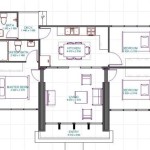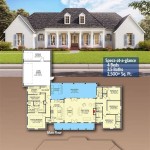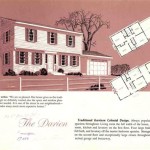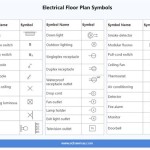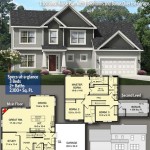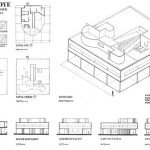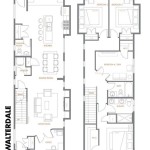Draw My Own House Plans
The prospect of designing one's own home is enticing. It offers complete control over the layout, features, and aesthetic, potentially saving money on architect fees. However, drawing house plans is a complex undertaking requiring careful consideration of numerous factors, from local building codes to structural integrity. This article explores the process and considerations involved in drawing one's own house plans.
Initial Stages: Defining Needs and Gathering Inspiration
Before putting pen to paper, or cursor to screen, prospective home designers should thoroughly define their needs and desires. This involves listing required rooms, desired square footage, lifestyle considerations, and budgetary constraints. Creating a detailed list helps clarify the project's scope and prevents costly revisions later. Gathering inspiration through architectural magazines, online resources, and visits to model homes can further solidify design preferences.
Understanding Building Codes and Regulations
Adhering to local building codes and regulations is paramount. These codes dictate essential aspects of a building's design, ensuring safety and functionality. Regulations cover aspects like setbacks, height restrictions, fire safety requirements, and accessibility standards. Ignoring these codes can lead to plan rejection, costly rework, and legal issues. Consulting with local authorities or engaging a code consultant early in the process is crucial.
Software Options for Drawing House Plans
Several software options cater to varying skill levels for drawing house plans. Basic drawing software allows for simple layouts and room arrangements, while more sophisticated architectural design software offers advanced features like 3D modeling, structural analysis, and energy efficiency calculations. Free and open-source options exist, but professional-grade software often provides more comprehensive tools and support. Choosing the right software depends on the complexity of the project and the user's technical proficiency.
The Design Process: From Rough Sketches to Detailed Plans
The design process typically begins with rough sketches, outlining the overall layout and room placement. These initial sketches evolve into more detailed floor plans, incorporating specific dimensions, window and door placements, and fixture locations. Creating separate plans for each floor, including the foundation, is necessary. Detailed plans should also include elevations, sections, and details of specific construction elements.
Key Elements to Include in House Plans
Comprehensive house plans must incorporate several key elements. Accurate dimensions are critical for material estimations and construction. Clear labeling of rooms, doors, windows, and fixtures ensures accurate interpretation by builders. Indicating plumbing and electrical systems is essential for proper installation. Including details about insulation, ventilation, and structural components contributes to the building's efficiency and durability.
Considering Site Conditions and Orientation
The site's topography, soil conditions, and orientation significantly influence the house design. Sloped terrain may require specific foundation solutions, while poor soil conditions necessitate soil testing and appropriate engineering considerations. Optimizing the building's orientation to maximize natural light and minimize energy consumption is an important aspect of sustainable design. Conducting a thorough site analysis is crucial before finalizing the plans.
Seeking Professional Consultation
While drawing one's own house plans is possible, seeking professional consultation is highly recommended. Structural engineers can ensure the structural integrity of the design, while HVAC specialists can optimize heating and cooling systems. Consulting with experienced builders can provide valuable insights into constructability and cost-effective solutions. Professional review can identify potential problems early on, saving time and money in the long run.
Printing and Distribution of Plans
Once the plans are finalized, printing multiple copies is essential for obtaining permits, securing financing, and communicating with contractors. Clear, legible prints ensure accurate interpretation by all parties involved. Digital copies can also be shared electronically, facilitating communication and collaboration.
Modifications and Revisions
The design process is iterative, and modifications and revisions are often necessary. Flexibility and adaptability are essential throughout the process. Changes may arise due to unforeseen site conditions, budgetary constraints, or evolving design preferences. Maintaining clear communication with all stakeholders ensures that revisions are implemented effectively.
Drawing one's own house plans is a challenging but potentially rewarding endeavor. Thorough planning, meticulous attention to detail, and a willingness to seek professional guidance are crucial for success. By carefully considering the factors discussed above, individuals can embark on this journey with greater confidence and increase the likelihood of creating a home that truly meets their needs and aspirations.

House Plans How To Design Your Home Plan

House Plans How To Design Your Home Plan

Designing My Own House

House Plans And Design

House Plans And Design

Can I Draw My Own Plans Fluid Building Approvals

Draw My Own Floor Plans House Real Estate Tool Plan Drawing 1920 Bungalow

Vignette Design Bucket List 7 Build A House From Scratch

Pin On Build My Own House

How Do I Design My Own House Plan 27x45 To Draw In Computer

